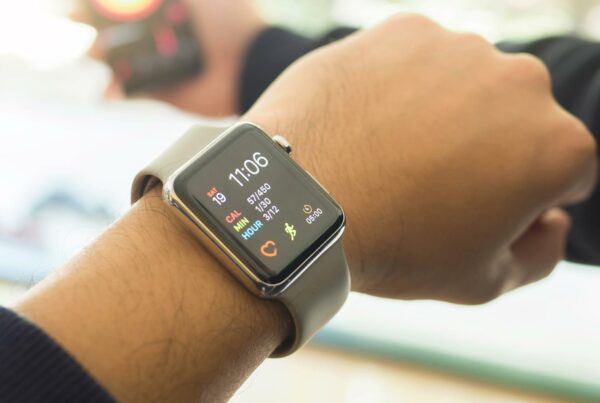With the rise in technology, there has been a significant change for independent pharmacies. Digital transformation and pharmacy tech acceptance are crucial to their survival. This technology allows them to operate at maximum efficiency. These updates eliminate human error from repetitive tasks while allowing professionals more time to focus on personalized care plans.
There are 25% more mobile devices than people in the world today. As a result, pharmacies must adapt their core offerings if they want sustainable business models.
Pharmacy Information Systems (PIS)
PIS helps pharmacists better manage their inventory and patient information. A typical PIS will include:
- User interfaces with a detailed patient profile.
- Connected computer system with multiple access points.
- Secure storage.
This information lets pharmacists search and maintain patient and drug information and health recommendations.
A PIS will often work alongside other solutions within a hospital or healthcare system. For example, a PIS can help reduce medication errors and compliance risks and increase patient safety by automating some of the tasks associated with running a pharmacy. In addition, by tracking drug costs and usage, a PIS can also help pharmacies save money.
Independent pharmacies need to be highly efficient. A Pharmacy Management System (PMS) is a software solution that combines a PIS with business operations management and can help smaller pharmacies automate tasks and streamline workflows. For example, a PMS can handle tasks such as drug stocking, customer and billing management, and clinicians’ workflows.
A PMS can help a smaller pharmacy save time and money by automating these tasks. In addition, a PMS ensures that all of the pharmacy’s operations comply with regulations.
A PMS may include features like:
- Manufacturing compounds, fulfilling prescriptions, tracking data entry into the system, refill requests, etc.
- Insurance management, payment reconciliation, third-party accounting software integration, and accounts receivable.
- Reporting and all it entails, including specific search features and digital record storage.
- Storing patient profiles, medication history, and other clinical information.
- Tracking supply chain elements such as improving the dispensing workflow, inventory management, and procurement.
Some of the most cutting-edge innovations in health care are coming out of pharmacy and medicine, but it’s often hard for them to communicate with each other. Standalone PMSs rely on a single vendor for updates or features; however, an integrated system connects with expanded capabilities that may not currently exist. An integrated system often sports features such as e-prescribing solutions, medical document management tools, electronic health records (EHR), pharmacy POS integration, RFID/barcode scanning programs, etc.
The demand for digital presence and connectivity is increasing, so PMSs must offer a seamless experience. With mobile optimization or integration of new apps, automated customer service options, and secure messaging within an organization’s network – patients can receive quicker attention and allow for more efficient care.
The mobile-first pharmacy experience
In a world where patients are more connected than ever, pharmacies must reach out and connect with them. The omnichannel strategy helps brands create seamless customer experiences across all contact points. Smaller independent pharmacies often compete with more prominent names in the industry but technology can give them a competitive advantage empowering them to provide efficient, personalized care.
Today’s Interactive Voice Response (IVR) systems go beyond auto attendants that operate on an uncomplicated menu. With speech recognition, users can get updates about their orders, ask questions, and troubleshoot problems. They can even integrate with various pharmacy management systems and automate prescription refills.
Chatbots are revolutionizing the healthcare industry by providing a more personal, efficient service with Artificial Intelligence (AI) capabilities that mimic human customer assistants. In addition, chatbot programs can educate patients about treatments and side effects and automate repetitive tasks.
Mobile Apps. Pharmacy mobile apps turn into all-inclusive digital wallets, with services such as refilling prescriptions digitally, setting reminders, and allowing patients to access their profiles. These apps free up the pharmacists’ time and let them focus on high-value services such as personalized interactions with in-store patients.
Users will choose a messaging system over filling in forms on a business website. For example, pharmacists and patients can message each other directly and securely with patient messaging systems.
Current state of automation
The need for pharmacy automation solutions has increased, and this will continue. According to BCC Research, the industry was worth $7 billion in 2019, with an expected growth rate of 8%. This isn’t new, though. Forward thinkers have been working on streamlining medication dispensing since 1970, when one man invented his first electronic portable digital tablet counter.
Automation has been the go-to solution for companies looking to improve their customer service and provide a superior experience. This includes automated systems like drug delivery devices, kiosks, or self-checkouts where people can buy medications and pick up what they need after scanning them at home.
Where are we headed?
To improve the customer experience, many companies are implementing automation in their businesses. For example, pharmacies rely on workflow management systems and AI-based communication tools. As a result, dispensing robots save time for employees who would otherwise manually fill prescriptions or make copies of scripts.
The healthcare industry is embracing new technologies such as AI to reduce medication errors and improve customer service. Robotic dispensing robots can be a cost-effective solution for smaller pharmacies with lower prescription volumes. Independent pharmacy owners must meet the demands of an ever-changing patient experience by providing streamlined, personalized, tech-driven care.
Pharmacy management solutions and automation allow independent pharmacies to maintain relationships with existing patients while optimizing operational efficiency. This added efficiency frees their valuable time for one-on-one care by systemizing repetitive tasks and competing more effectively against big box retailers.














